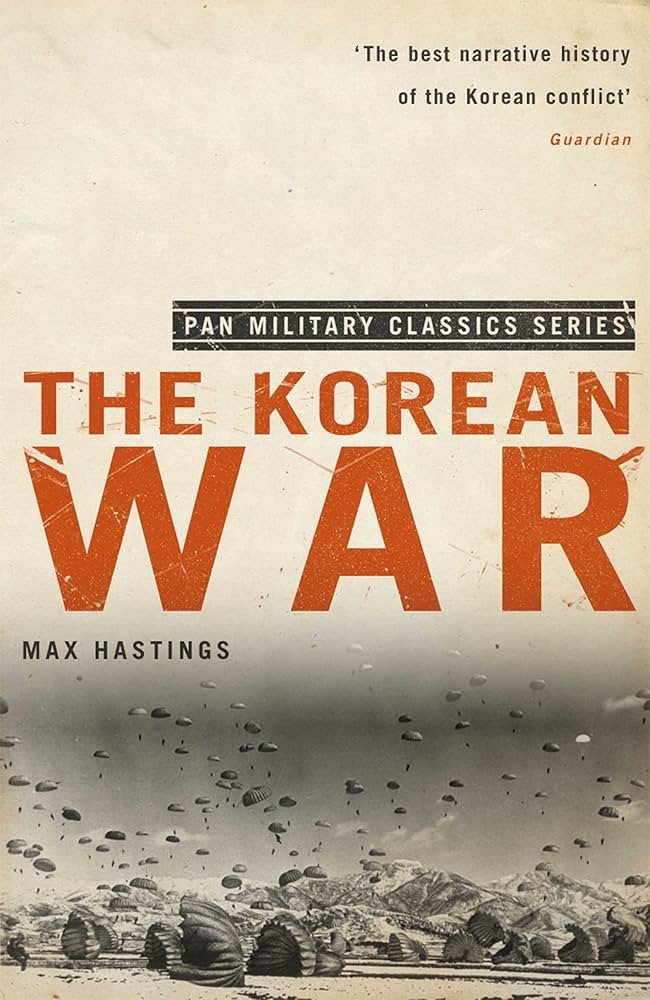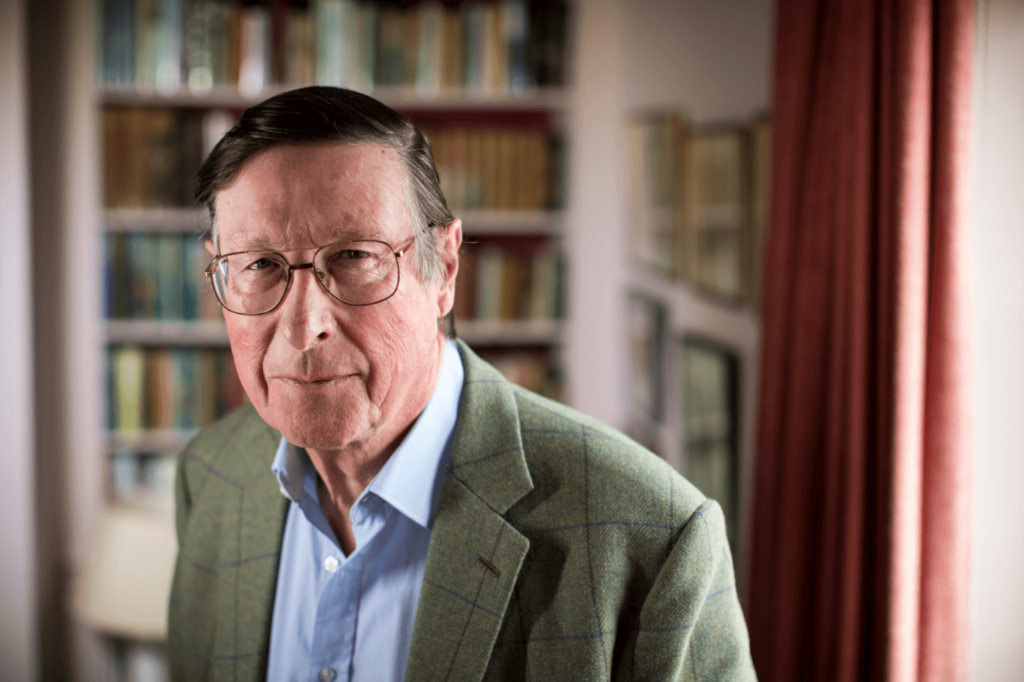

Another very enjoyable military history book, by Max Hastings.
Having just read and very much enjoyed Operation Pedestal, I picked this up, locally, for just 50p!
I knew next to nothing about the Korean War. I hadn’t even twigged that M*A*S*H was set in this conflict. I’d just assumed it must be ‘Nam! So, this title has been an education.
It’s fascinating to learn how close we came to WWIII, with the US military hawks being very keen to use the atomic bomb. And it illustrates how most wars are far less black and white – esp’ morally speaking – than WWII turned out to be.
Just five years after 1945, the US – having scaled down military forces (as all combatants had inevitably done) – finds herself, despite emerging victorious from WWII, becoming ideological enemies of their former Allies, Stalin’s Communist Russia (who have at least a joint, if not a stronger case, for defeating Hitler).
When North Korea’s Communist leader Kim Il Sung invades South Korea, the US see this as Moscow’s doing. The US manage to bring the UN onboard, albeit reluctantly. But really this – whilst started by North Korea – was an American war.
WWII war hero MacArthur, the most Hawkish of the right-leaning US military, is appointed commander. Rather than being satisfied with taking things back to the initial position – the infamous 38th parallel – he storms beyond, Northwards, taking the war to China’s borders.
As Hastings gleefully recounts, President Truman had a very hard time preventing MacArthur and his supporters from attacking China herself.
And, as Truman and America’s UN allies feared, even without attacking China directly, MacArthur’s aggressive pursuit of Kim Il Sung’s forces, deep into North Korea (right up to the Yula river/border), rather unsurprisingly, brings China into the war.

As Hastings points out in his intro, the Korean War has been rather neglected. Why? Well, for starters, it was relatively short; 1950-53. And most of the ‘war of manoeuvre’ occurred in the first year. After which – gung-ho loose cannon MacArthur having eventually been sacked, and replaced by Ridgeway – a state of stalemate and trench warfare (akin to WWI on the Western Front) arose, back around the 38th parallel.
Years two and three of the conflict were a protracted period of simultaneous warfare and bargaining, under a rather shaky banner of ‘negotiation’. This aspect of the war made it ever more unpopular, both with the UN nations, and back home in the US . Lives continued to be lost whilst possible roads to peace were endlessly havered over.
Another factor leading to this war being sidelined was the fact that whilst Kim Il Sung’s Communist north was undoubtedly awful, the regime in the South, under Syngman Rhee, was not very much better; mired in corruption and blatantly brutal.
Hastings conveys the lead up to war, and the first more dramatic year of combat, very well. Then it goes a bit weird, for me: having started out quite detailed, and chronologically, once ‘peace talks’ start, he switches to more thematic chapters, tackling such subjects as the air war, and POWs.
As a result the feel or flavour of the book changes. From frequent exciting tales of military action, to slightly less gripping but still important and informative discussion of ‘issues’, with gritty combat, or humanised (ie anecdotal) experiences becoming a slightly lesser feature.
Hastings is clearly on the right wing of the political spectrum, and often snipes at left wing takes on the subject, as expressed in Western media. This bias is clear, and has to be borne in mind. He partakes of a legacy or lineage that goes waaay back, and can be clearly seen in the way British historians, over many generations, continue to deal with Revolutionary and then Napoleonic France.
In the end, despite my own more left-leaning (or at least sympathetic) history, I find myself mostly – tho’ not entirely – in agreement with Hastings.
The Korean War was an object lesson to the US (which it failed to learn, viz. Viet Nam, etc.) and the UN, in how post-WWII warfare – especially against so called under- or lesser-developed (in terms of capitalist style industrialisation) nations or peoples – was both morally and practically (strategically and tactically) far harder than the victors of WWII might’ve liked.
Ultimately Hastings concludes – and it’s hard to disagree – that, whilst it’s a war that’s largely been forgotten, sidelined/overshadowed by ‘Nam, it was worth fighting; a just cause. You may not agree?
But, whatever the ‘truth’ may be, this enjoyable and informative book is certainly well worth a read.
NB – This book has several useful maps, and quite a few black and white photos. But, frustratingly and inexplicably – esp’ given his other books usually do – there’s no glossary. These ought to be mandatory in such books; they’re esp’ useful for explaining the many potentially confusing abbreviations!
